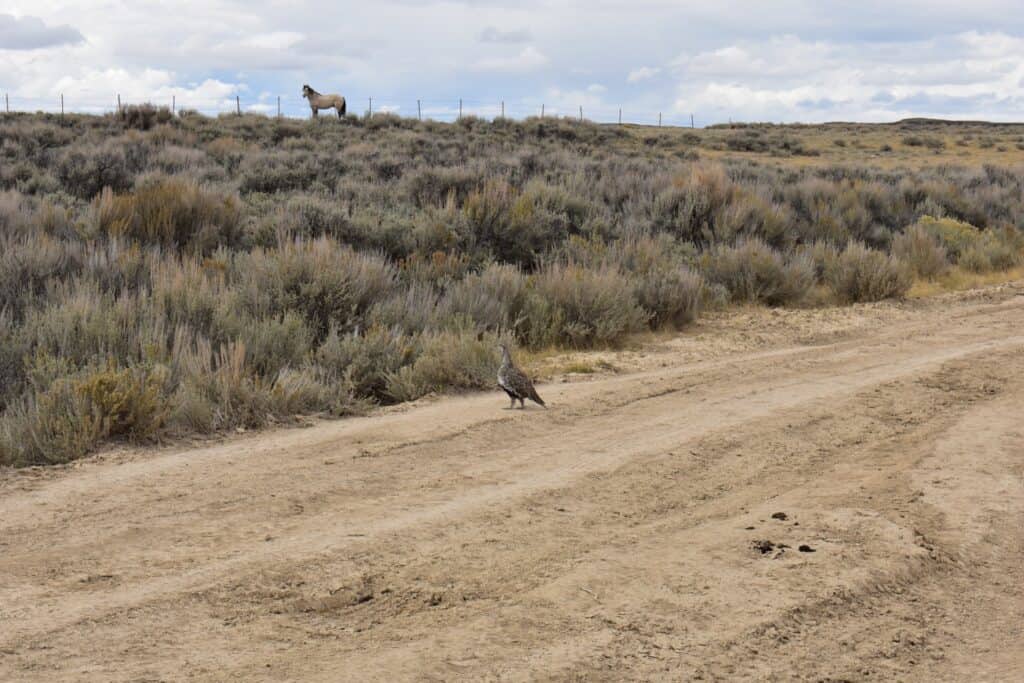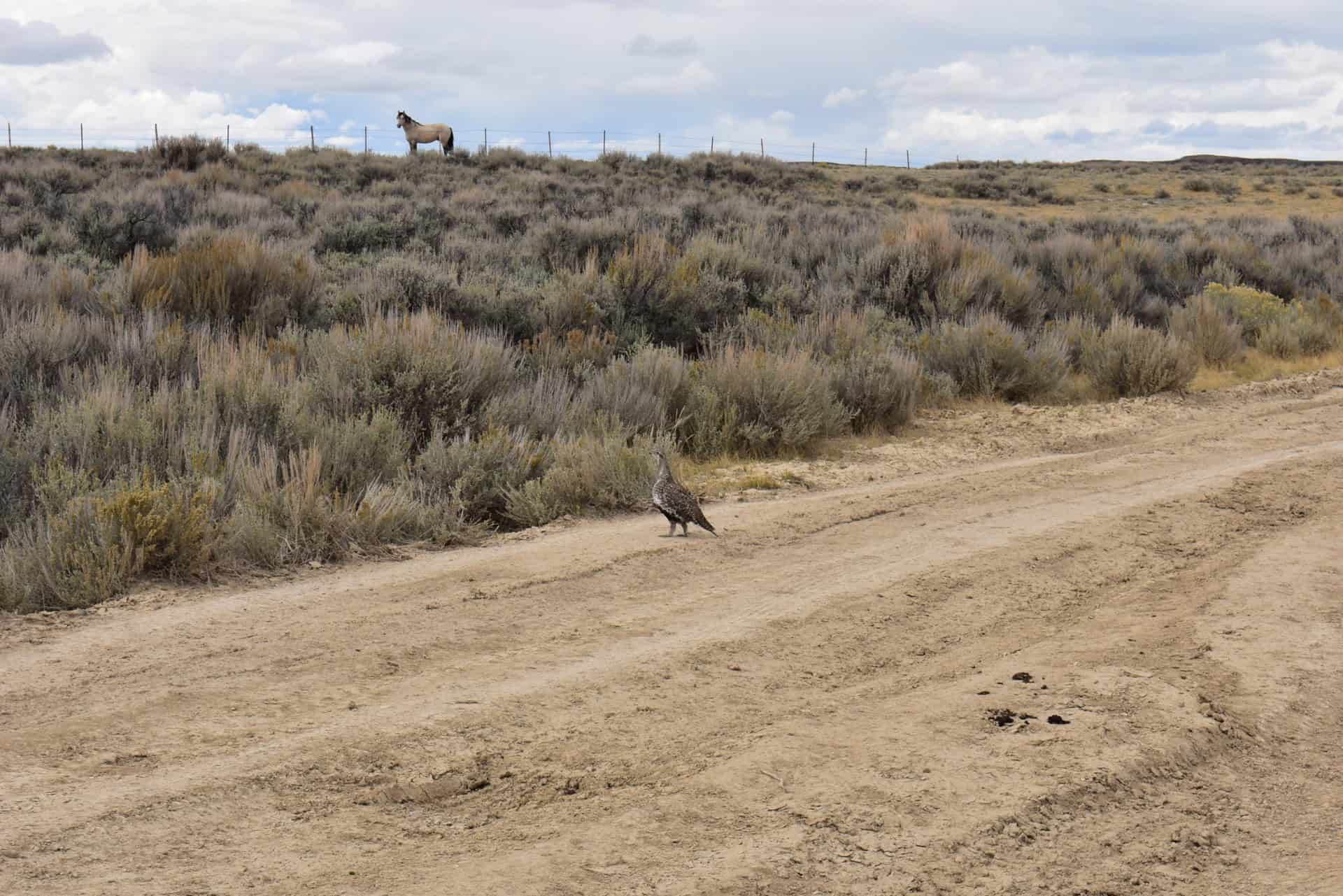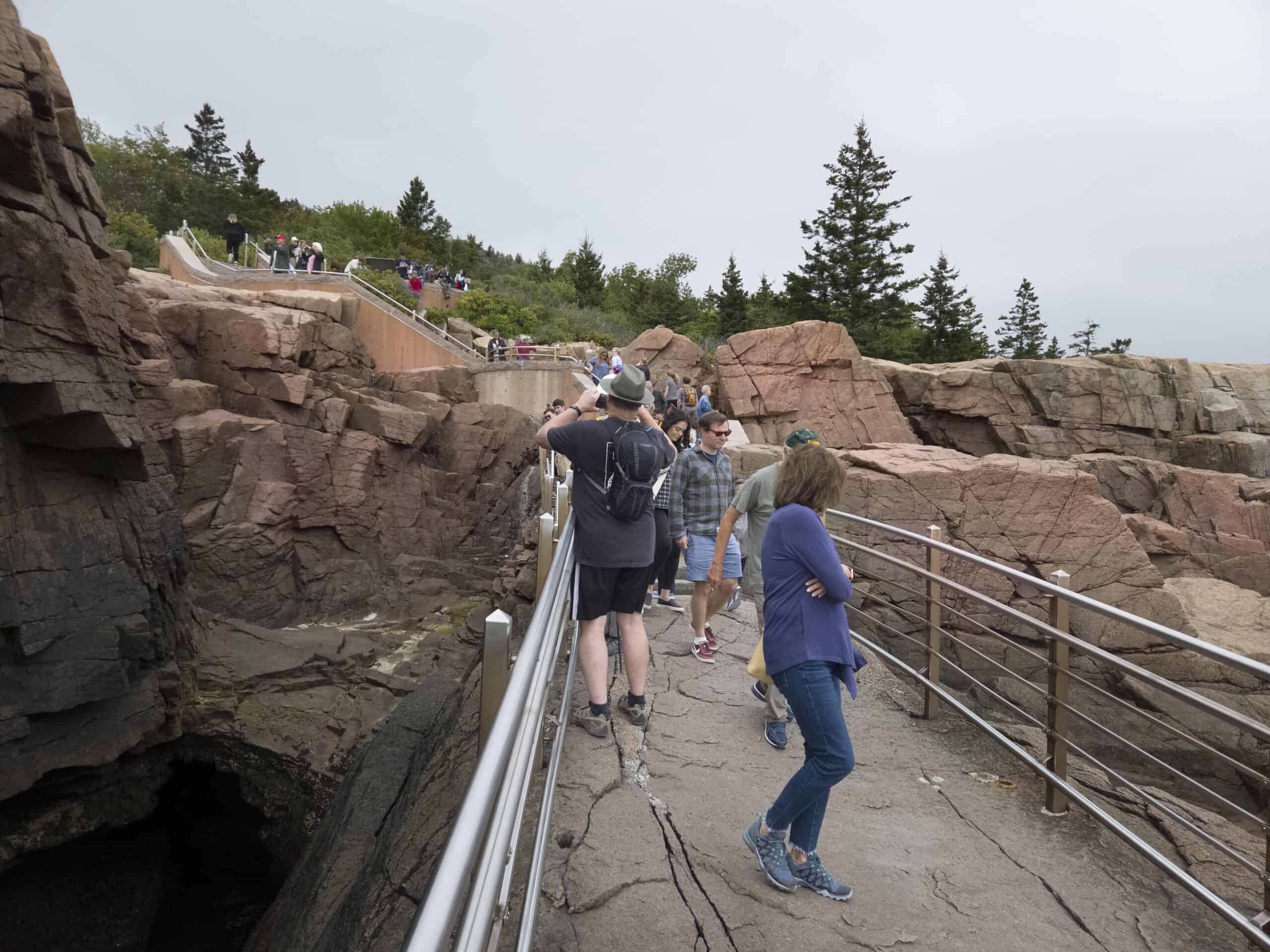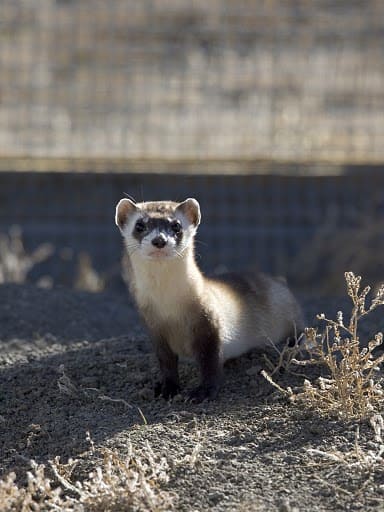Share this article
Wildlife Featured in this article
- Greater sage-grouse
- Horse
JWM: With too many free-roaming horses, sage-grouse suffer
Sage-grouse survival declines when free-roaming horse populations get too large
When free-roaming horse numbers exceed the maximum management levels enforced by the Bureau of Land Management in Wyoming, survival of sage-grouse nests, broods and juveniles decline.
“If we want to manage sage-grouse and get their populations higher, management really needs to support that maximum level,” said Jeff Beck, a professor of rangeland wildlife habitat restoration ecology at the University of Wyoming. “We can’t exceed that, or we’ll see impacts on sage-grouse where sage-grouse and free-roaming horses co-occur.”
Greater sage-grouse (Centrocercus urophasianus) are most abundant in Wyoming, but they face threats of habitat loss and fragmentation from factors like renewable and nonrenewable energy development, exurban development and nonnative annual grass species like cheatgrass that fuel large wildfires.
Wildlife biologists also recently noted that when they overlaid sage-grouse habitat with management areas of free-roaming horses (Equus caballus) in Wyoming, it matched by 99% —a situation that occurred in about 11% of sage-grouse habitat in the state. “Some of the highest quality sage-grouse habitat in Wyoming overlaps areas supporting free-roaming horses,” Beck said.
In addition, about 77% of land in Wyoming has potential habitat for sage-grouse. “It’s pretty remarkable how much habitat we have,” he said.

Beck and his colleagues wondered if free-roaming horses could be another potential reason for sage-grouse population declines. In past research from the Great Basin, fecal density from horses suggested that there was a strong effect of horses on sage-grouse nest survival. Beck and colleagues conducted a similar pilot study evaluating the effects of horse fecal density on sage-grouse nest survival in Wyoming. They found results similar to those from the Great Basin study, but their data were based on only one year and didn’t focus specifically on the maximum appropriate level of horse numbers in Herd Management Areas (HMAs) set by the BLM.
Beck led a study published in the Journal of Wildlife Management using 15 years of data from 2008-2022 on sage-grouse and free-roaming horses in Wyoming to find out more.
The BLM manages horses in 177 HMAs across 10 western states, 16 of which are in Wyoming. Beck’s research evaluated nine of those HMAs, all with varying degrees of free-roaming horse management. The researchers evaluated data on about 1,000 female sage-grouse in these areas as well as information on nests, early broods that were 0-20 days old and late broods that were 20-35 days old. Their study also evaluated survival of adult females during the spring/summer breeding season and overwinter survival of juveniles. They also included sage-grouse in areas without free-roaming horses to serve as control populations.
Their findings were quite striking. Sage-grouse survival declined in areas where free-roaming horses exceeded the maximum level provided by the BLM. When the appropriate maximum management level was three times what it should be—which was fairly common—survival declined 8.1% for nests, 18.3% for early broods, 18.2% for late broods and 18.2% for juveniles.
While there’s likely some direct impacts of horses on sage-grouse in the form of trampling nests or causing grouse to flush from leks, the more likely culprit is indirect impacts, particularly during the spring and summer when earlier work conducted by one of Beck’s PhD students showed the greatest spatial overlap between the two species.
Horses tend to trample sagebrush, increase cheatgrass and bare ground, and shorten the height of grasses. As a result, nests, chick and juvenile grouse don’t have much cover from predators or exposure to the elements. “There’s an increase in undesirable plants and a decrease in desirable plants,” he said.
In addition, horses and sage-grouse both stay close to water, especially during the summer. “Horses are using the same habitat as sage-grouse at certain times of the year, and they degrade the habitat and make it less suitable for species like sage-grouse,” Beck said.
Managing horses
Horse numbers in BLM Herd Management Areas in Beck’s study exceeded the appropriate management level—70% of the time. “Very rarely were horse numbers where they were supposed to be,” Beck said, adding that in at least one case they were as high as seven times more than the maximum level.
The reason, Beck said, is twofold. For one, horse growth rates are fairly high. “It’s been shown that population increase can be as high as 20% a year,” he said, adding that while the animals usually have singletons, they breed all year round. And there are not many large predators on the landscape to control them.
Another reason is the social aspect. Horse advocacy groups often put forth litigation that can take years to be settled and delay the process of legal management. Meanwhile, the BLM has worked toward using alternative methods of gathering and removing horses from the range such as contraception, but it has proven not to be effective.
But Beck said this research shows one more reason to follow the appropriate management levels offered by the BLM. “The Free-Roaming Horses and Burros Act of 1971 charged the BLM to create appropriate management levels and they seem to work,” he said. “If we pay close attention to that and make all the efforts to keep these populations under those levels, we can give sage-grouse a boost.”
Header Image: A sage-grouse and free-roaming horse in the Adobe Town Herd Management Area in south-central Wyoming. Credit: Jacob Henning








